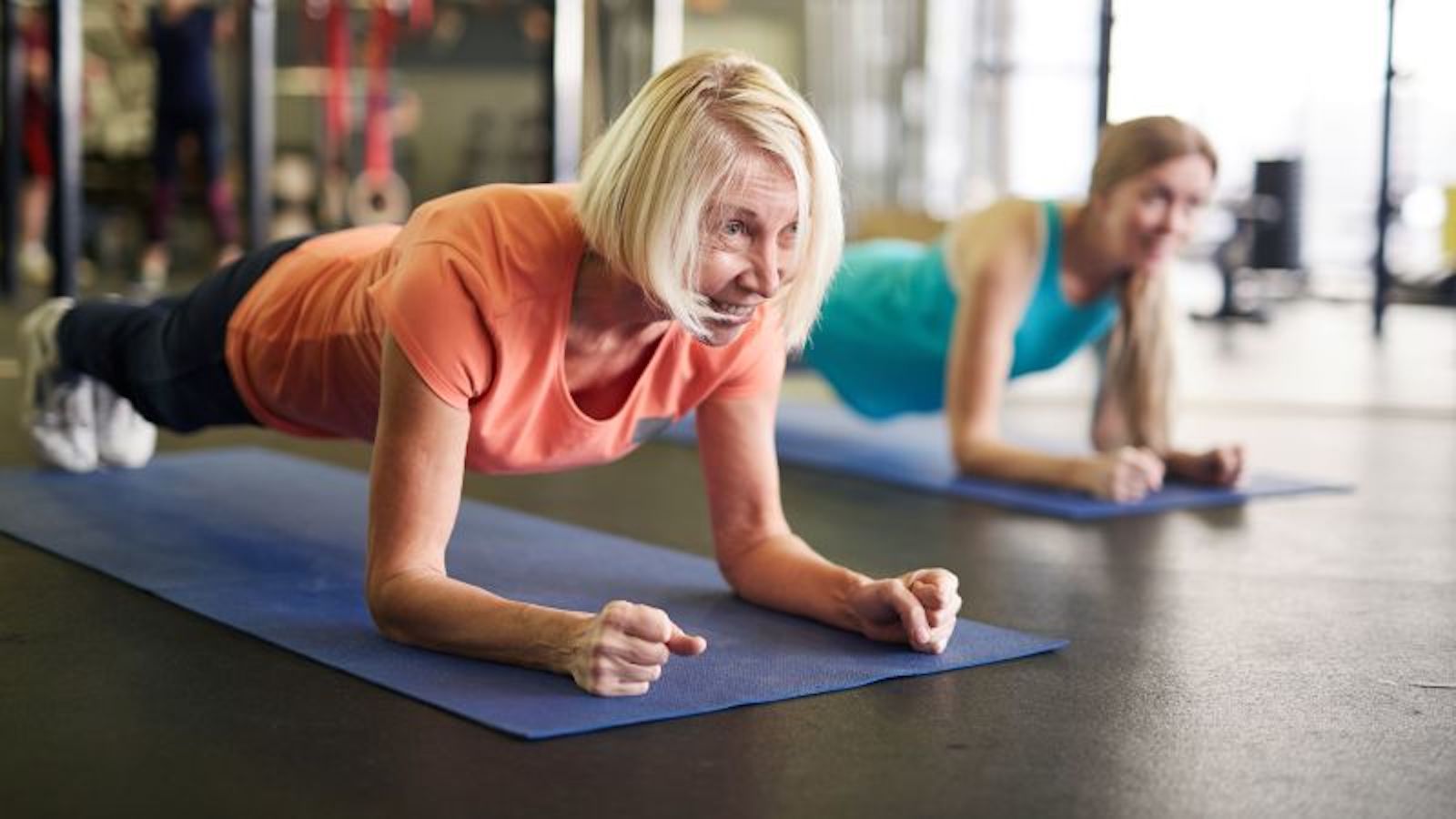
Important note: Before starting any new exercise program, consult your doctor. Stop immediately if you feel pain.
(CNN) — When it comes to lowering blood pressure, studies have generally shown that aerobic or cardiovascular exercises are best.
Now, new research suggests that it is worth including other types of physical activity as an effective tool to prevent and treat hypertension, or high blood pressure.
Exercises that involve non-moving muscles, such as wall squats and planks, may be better at lowering blood pressure, according to a study published Tuesday in the British Journal of Sports Medicine.
This type of training is known as isometric or static exercise, according to the Mayo Clinic.
Isometric muscle action occurs when muscles contract but do not visibly change length and the joints involved do not move, facilitating stability of the body.

Planks are another type of isometric exercise. (Credit: SeventyFour/iStockphoto/Getty Images)
Isometric exercises can be done with or without weights, simply depending on your body’s own weight.
“In general, isometric exercise training is the most effective way to reduce systolic and diastolic blood pressure,” study co-author Dr. Jamie O’Driscoll said in a statement. O’Driscoll is Professor of Cardiovascular Physiology in the School of Psychology and Life Sciences at Canterbury Christ Church University in England.
“These findings provide a comprehensive data-driven framework to support the development of new exercise guideline recommendations for the prevention and treatment of high blood pressure.”
The best exercise to control blood pressure
Existing exercise guidelines for blood pressure control, which emphasize aerobic or cardiovascular exercises such as running or cycling, are effective but are also based on old research that excludes more recently adopted exercise protocols such as weight training. high intensity, interval training and isometric training, the study authors said.
The researchers considered the guidelines to be outdated and in need of revision, so they analyzed randomized controlled trials that reported the effects of exercise interventions, lasting two or more weeks, on systolic and/or diastolic blood pressure between 1990 and February 2023
Systolic blood pressure measures the maximum pressure in the arteries when the heart contracts and relaxes, while diastolic blood pressure tells what the blood pressure is when the heart rests between beats, according to the Centers for Disease Control and Prevention. from USA
The authors defined healthy resting blood pressure as a reading less than 130 over 85 millimeters of mercury, a pressure measurement known as mmHg. Pre-high blood pressure is one that ranges between 130/85 mmHg and 139/89 mmHG. And high blood pressure such as 140/90 mmHG or higher. The upper numbers of these figures are the systolic pressure; the lower numbers are the diastolic pressure.
From a review of 270 trials with 15,827 participants, known as a meta-analysis, the authors found that among HIIT, isometric exercise, aerobic exercise, dynamic resistance training and a combination of the last two, isometric exercise led to greater reductions in blood pressure.
“Blood pressure reductions after aerobic exercise training amounted to 4.49/2.53 mmHg; 4.55/3.04 mmHg after dynamic resistance training; 6.04/2.54 mmHg after combined training; 4.08/2.50 mmHg after HIIT; and 8.24/4 mmHg after isometric exercise training,” according to a press release.
Wall squatting (isometric exercise) was most effective at reducing systolic pressure, and running (aerobic exercise) was most beneficial at lowering diastolic pressure, but isometric exercise overall was better at reducing both elements of pressure.
“It’s encouraging to see other forms of exercise explored in this research, as we know that those who do exercise they enjoy tend to continue for longer, which is key to maintaining lower blood pressure,” said Joanne Whitmore, cardiac nurse. senior at the British Heart Foundation, by email. Whitmore was not involved in the study.
“However, it’s important to keep in mind that there are other lifestyle changes besides exercise that can benefit your blood pressure,” he added. “These include maintaining a healthy weight, eating a balanced diet, reducing salt intake, not drinking too much alcohol, and making sure you continue taking any prescribed medications.”
More research is needed to determine exactly why isometric exercises might be better at lowering blood pressure than other types of training, the authors said.
Do isometric exercises
The authors said their findings should inform future guidelines on exercise for blood pressure.
World Health Organization guidelines say people should do 150 minutes of moderate-intensity exercise a week, which includes two strength-based training sessions.
“This research fits those guidelines very well,” said Jim Pate, senior exercise physiologist at Marylebone Health Group in London, who was not involved in the study.
You can do wall squats or sit unsupported with your back flat against the wall and then walk about 20 inches away from the wall, with your feet shoulder-width apart, according to the Arthritis Foundation.
With your back flat against the wall and abs tight, inhale and then exhale as you squat as low as you comfortably can without your butt being lower than your knees. Remain squatting until you feel pain, then inhale while standing, pushing up through your heels. The Arthritis Foundation recommends doing 10 wall squats three times a week.
Isometric training programs typically involve four two-minute contractions, separated by one- to four-minute rest intervals, performed three times a week, according to the study.
If you have a heart condition, talk to your doctor about the best exercise for you, Whitmore said.
“People with health problems should not be afraid to exercise safely,” Pate said by email. “But finding a professional who has experience with clinical exercise, such as an exercise and sports medicine physician, physical therapist, or clinical exercise physiologist, can help provide the structure and peace of mind to make it possible.”

